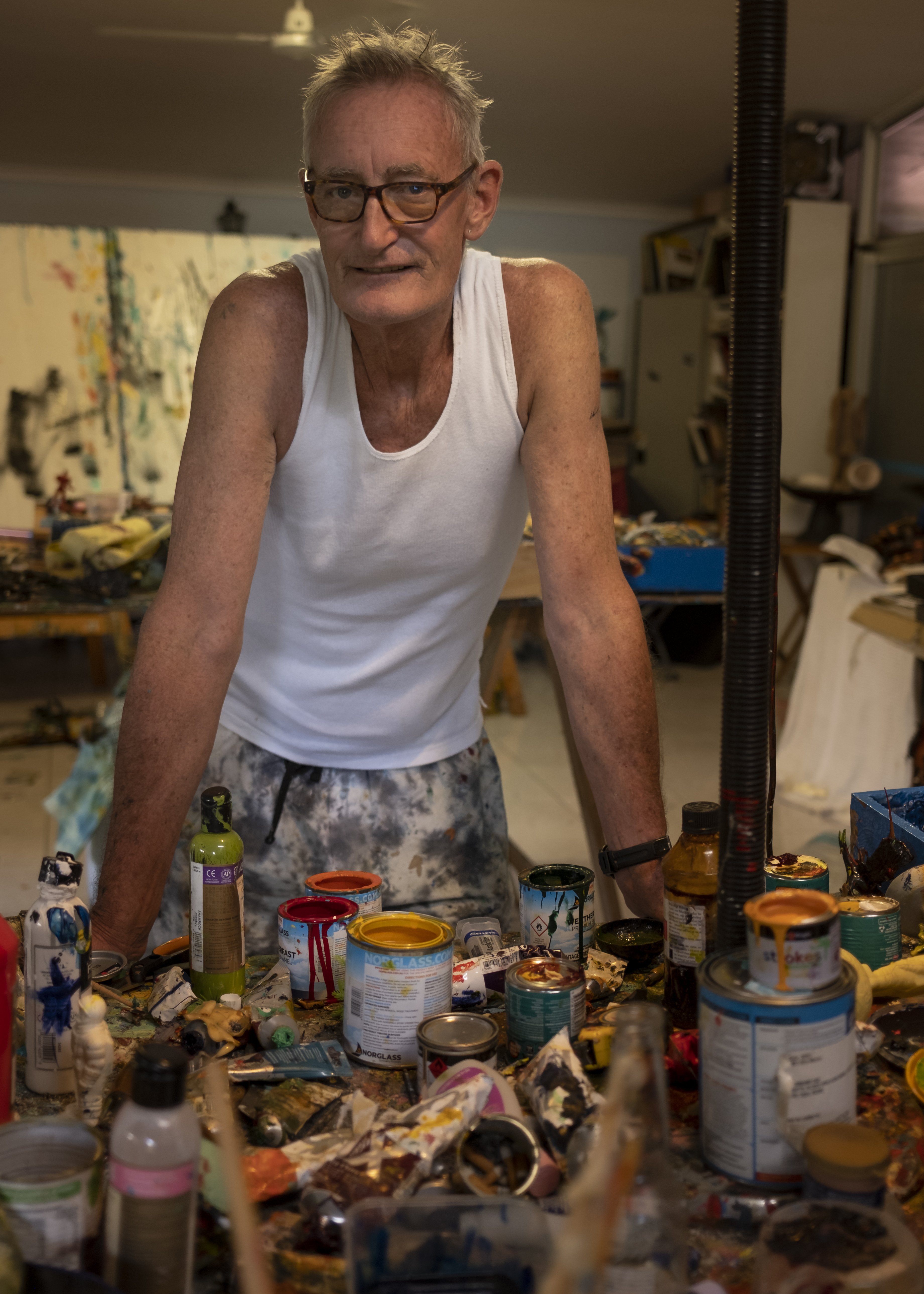
Following the launch of Sputnik, the first orbital space satellite, the political philosopher Hannah Arendt wrote that going to space would allow us to see and appreciate our planet home for the first time.
It was an opportunity to grasp anew that Earth’s nature might be unique "in providing human beings with a habitat in which they can move and breathe without effort and without artifice".
It was a hopeful vision. But she wasn’t the only one watching.
In Te Waipounamu, a young Geoff Dixon was standing in his backyard, pushing his face towards the new star.
These early satellites and the space race they initiated foreshadowed how things would be in the future, he thought at the time. "I thought the world would get so unclean that we’d have to go to another planet. And it was just a fixation," the artist says in a new documentary.
In his estimation, we’re perilously close to that moment, not that he’s packing.
Bluff-born, South Island-raised Dixon is the subject of the documentary Geoff Dixon: Portraits of Us, which will screen in Dunedin as part of the New Zealand International Film Festival next weekend.
It is obvious from his work, his paintings and sculpture — mediums that merge one into the other in his hands — that those machines are still very much on his mind. And what they mean for us all.
Early in the documentary, made by serial collaborators Glenis Giles and Clare O’Leary, who share producing and directing credits, we are treated to a long slow investigation of one of Dixon’s canvasses, in which a collection of downcast birds, grounded and depressed, are mute bystanders as humankind’s space machines dominate the air — despite the rockets’ trivial size in the grand scheme of the painting.
The birds are standing in for us, of course. Well, the birds or maybe the fried eggs, another regular feature of the paintings, Dixon’s shorthand for extinction.
"The paintings are portraits of us because we are creating our own chaos," Dixon explains on screen. "Basically f****** up the environment, you know. And we think we’re OK but we’re not."
Growing up in New Zealand, he says, he wanted to paint rare birds and was concerned about the limitations that might involve. Time has resolved the dilemma.
"I can paint them all."
Giles and O’Leary, who have previously worked together on films about artists Ralph Hotere and Gordon Crook, historian Michael King and playwright Mervyn Thompson, had all but given away film-making when the opportunity came up to get the band back together.
"We’d both gone away from films for lack of funds, basically. Went and got job jobs," Giles says.
Then along came an angel investor who believed Dixon’s work deserved to be better known.
Which isn’t to say the film-makers were both fans themselves straight off the bat.
"A girlfriend of mine was in an art group and she had a painting of his which I used to look at and go, ‘oh, no, I just don’t get this’," Giles recalls. "It took me a couple of years to kind of click in and then I was in another art group and we bought one of his works."
But it was a conversation with the artist himself that really turned things around.
"He talked about the environmental issues, because I hadn’t understood the eggs and the rockets and the birds — that combination — at all. We had this conversation and I thought, ‘oh, yeah’, and I went back and had a look at my friend’s painting and thought ‘he’s absolutely right, now I understand’."
Dixon lives in Cairns these days, has indeed been mainly resident in Australia for some years. It means his work now incorporates all sorts of exotic Australian ornithology, alongside a birdwatcher’s handbook of Kiwi manu — tui, kereru, pukeko, kokako, takahe, kotare, hihi, to name a few.
It also means Te Tai-o-Rehua, the Tasman Sea, represented a challenge for the film-makers, whose commission coincided with Covid.
"The unique thing about this is that we’ve never been to his studio — we couldn’t travel," O’Leary says. "It was all during Covid lockdown, so we worked via Zoom with a local crew."
The upshot was, the directors did not always have perfect control over what the camera operators recorded.
"We would just get these files from the session that they played around with."
In the end they worked with a couple of different crews, remotely, one in Sydney and the other in Cairns to get what they needed, and deployed a couple of GoPros in Dixon’s studio for good measure.
"It’s just the nature of the beast."
Importantly, the documentary includes plenty of art. Finished art, art in progress and art just beginning.
"When you see his art on the big screen it is just magic, and be able to stay there long enough to really appreciate the complexity of it as well," O’Leary says.
If the finished articles are engaging, the beginnings are pretty interesting too, Dixon massaging great handfuls of viscous white across new canvases, smearing layers of shade and piping contrasting lines down the length, he alone knowing where it might all end.
The documentary traverses an interesting life, Dixon’s various adventures in love and travel, throughout Dixon an apparently amused participant. There’s no sense he’d have sought this spotlight, rather he’s that quintessential Kiwi character, the quiet doer.
"He’s quietly doing what he believes in and living the life that he believes in," O’Leary concludes.
Perhaps he is taking a line or two from American poet Emily Dickinson:
"'Hope’ is the thing with feathers — that perches in the soul — and sings the tunes without the words — and never stops — at all."
The Film:
Geoff Dixon: Portraits of Us screens at Rialto Dunedin on Sunday, August 21 at 1pm, as part of the New Zealand International Film Festival.












